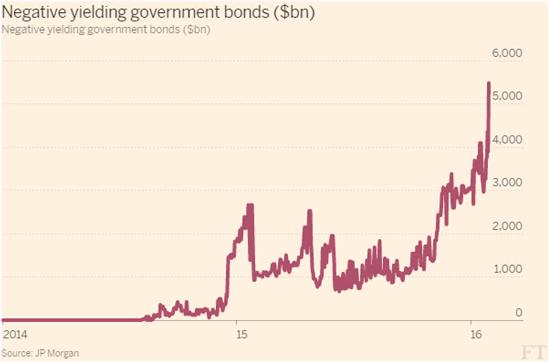Well that didn’t take long. Two weeks of falling share prices and the European and Japanese central banks go into full panic mode. The ECB promised new stimulus — which the markets liked — and then BoJ upped the ante with negative interest rates — which the markets loved. Here’s a quick summary from Bloomberg:
Central Banks Intensify Campaign for Negative Rates
In surprising markets by penalizing a portion of banks’ reserves, the Bank of Japan on Friday joined a growing club taking the once-anathema step of pushing some borrowing costs beneath zero.
“Negative rates are now very much the new normal,” said Gabriel Stein, an economist at Oxford Economics Ltd. in London. “We’ve seen they are possible and we’re going to see more.” Negative rates once “sounded illogical,” said Stein. “We now know what we thought was true isn’t.”
This is a resounding admission of failure. Over the past seven years the world’s central banks have cut interest rates to levels not seen since the Great Depression and flooded their banking systems with newly-created currency, while national governments have borrowed unprecedented sums (in the US case doubling the federal debt). Yet here we are in the early stages of a global deflationary collapse. Commodity prices have followed interest rates to historic lows, while growth is anemic and may soon be nonexistent.
The official response: More extreme versions of what has already failed. Here’s a JP Morgan chart published by Financial Times that shows just how sudden the trend towards negative interest rates has been:

Future historians will have a ball psychoanalyzing the people making these decisions, and their conclusion will almost certainly be some variant of the popular definition of insanity as repeating the same behavior while expecting a different result.
So what does this new stage of the Money Bubble mean? Many, many bad things.











Leave A Comment